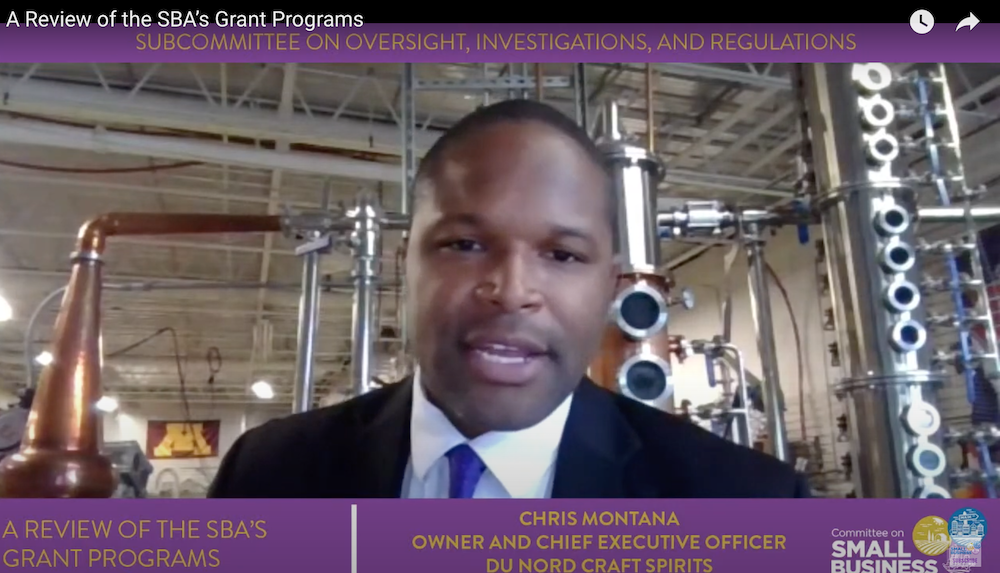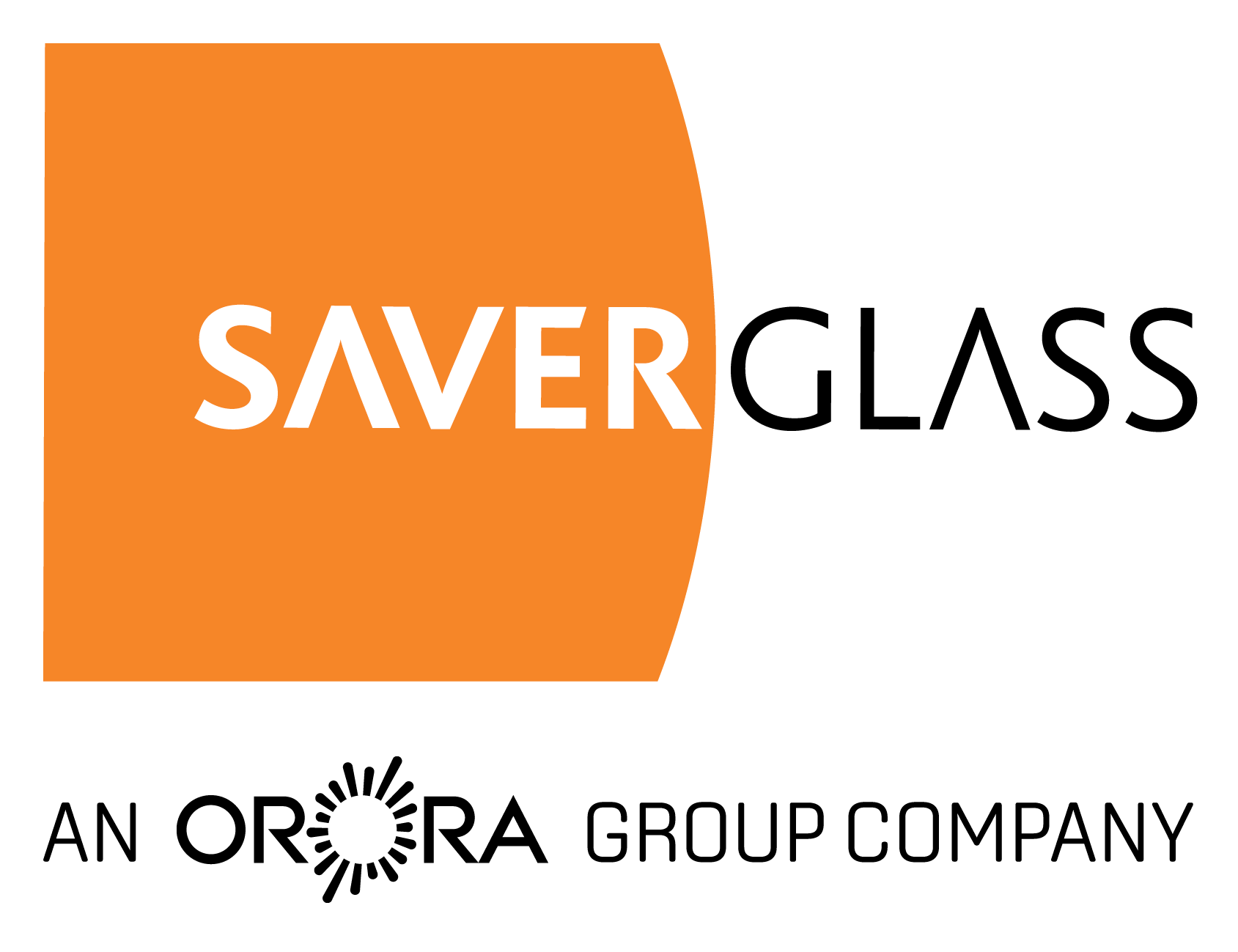You can watch Chris Montana’s testimony here.
Madame Chair and Members of the committee, I am honored today to represent craft distillers nationwide in addition to my own company Du Nord Craft Spirits.
Who are the American Craft Distillers?
At the outset it is worth defining exactly what a craft distillery is. The American Craft Spirits Association (ACSA) is the governing body for craft distillers nationally and is comprised and governed exclusively by craft distillers. The ACSA defines craft distilled products as:
“distilled spirits that are produced in the U.S. by licensed producers that have not more than 750,000 proof gallons (or 394,317 9L cases) removed from bond, market themselves as craft, are not openly controlled by a large supplier, and have no proven violation of the ACSA Code of Ethics.”
Put simply, a craft distiller is a small American producer that is independent and ethical. “Small” is a relative term, and 394,317 cases may seem like a good deal of sales, but most distillers fall well short of that number: 90% of craft distillers produce less than 1.3% of the craft limit, or approximately 5,126 cases of spirits annually. By comparison, Bacardi produces approximately 18 million cases annually. Independence is a critical part of being an American craft distiller; the products we produce are guided by our love for the spirit and industry and not by distant boardrooms. Lastly, the ethics and ethos of the American craft distiller is second to none. We are truthful in our advertising and transparent in our practices. Though we self-regulate via the ACSA Ethics Committee, that committee is the easiest gig in the organization because they rarely have any ethical issues to resolve despite the more than 2,200 craft distilleries in the country.
Craft distillers are a revitalizing force. Many urban craft distilleries are located in previously unused or abandoned manufacturing space, and many rural distilleries are located in close proximity to the farmers who grow their grains and the livestock farmers that consume their spent grains. In all cases, distillers add value to American agriculture and consume millions of pounds of grains, fruits, and forestry products grown and produced here in the United states. 90% of all craft distilleries are classified as “small distilleries” producing less than 1500 cases in a year, and, of those distilleries, 92% of their business occurs within their home state; this means that most craft distilleries are not only part of their communities they exclusively rely on their immediate community for their survival. Whether urban or rural, distilleries are woven into their communities and are part of a healthy ecosystem that promotes local culture.
Challenges all Craft Distillers Face
Craft distillers must navigate an antiquated and complex regulatory scheme to get their products to market, and as a result, most craft distilleries are primarily supported by sales at their distillery. Unlike most products produced in the United states, distillers are usually not allowed to sell their product directly to their consumers. Instead, the three-tier system installed post prohibition requires that distillers first sell to a distributor who then sells to a retailer. This system has consequences: first, the distiller only realizes approximately 50% of the retail value of their products on the shelf at a local liquor store. A second consequence is a result of consolidation within the distribution tier and a corresponding expansion within the producer tier that has resulted in many more products having fewer and fewer chances at finding distribution. Simply put, it is extremely difficult for the average craft distiller to get their product in front of their customers. For this reason, most of us rely on our cocktail rooms. A “cocktail room” or “tasting room,” is typically an on-site bar or simple tasting facility that allows the consumer to come into the distillery, try the distiller’s product, and make a purchase. The laws governing tasting rooms are a state issue and vary greatly, but most cocktail rooms look similar to a neighborhood bar and often operate in the same way. It is, however, common for cocktail rooms to be restricted to only serving spirits that are made on site and thus they are not true competition to other bars and restaurants with fuller offerings. These cocktail rooms are critical to building our brands. By some estimates, in 2019, $484,000,000 was spent on liquor advertising, and it’s a safe bet that little (if any) of that came from craft distillers. The marketplace is crowded, and it is difficult for a small distillery to be heard and found amidst all this noise: cocktail rooms are our one opportunity to speak directly to our consumers and present our products as they were meant to be consumed.
2020 and the Response to COVID-19
It’s been a tough year and a half. In early March, we at Du Nord Craft spirits made the decision to close our cocktail room due to COVID-19. The decision was prompted by our staff reaching out and saying, in no uncertain terms, they didn’t feel safe interacting with customers in the midst of what was clearly becoming a public health emergency. After hearing from the staff, I closed our cocktail room and in so doing I thought I was closing my business for good. Our cocktail room represented more than 60% of our revenue; without it, I couldn’t see how we could possibly pay our bills and meet our obligations. Two days later, all bars and restaurants in our state were shut down. Like many craft distilleries, my wholesale sales relied heavily on local bars and restaurants. Nationally, restaurants and bars are distillers best allies in cutting through to customers who are looking for something new and local. When our brothers and sisters in the restaurant industry were forced to shut down, we lost one of the few sources of sales we could count on outside of our own cocktail rooms.
While restaurants, bars, and cocktail rooms were shutting down across the nation, the need for hand sanitizer exploded and caused a massive shortage. People who could not work from home, and those deemed essential, were told to wash or sanitize their hands often, but the products were simply not available. The primary ingredient in hand sanitizer is ethyl alcohol, as distillers we know everything there is to know about ethyl alcohol as it is also the primary ingredient in everything we make. Unsurprisingly, craft distillers pivoted and began producing hand sanitizer as fast as they could. They didn’t produce the sanitizer just to save their business; they produced it because it’s what their communities needed. In a crisis we expect everyone to do what they can to support the public good; distillers nationally recognized that this is something we could do to help, and we jumped in with two feet. At Du Nord, we, in partnership with other Twin Cities distilleries, would go on to produce tens of thousands of gallons of sanitizer and distribute that sanitizer to those most in need–in coordination with epidemiologists and public health officials. Much of what was made was not sold; in fact, thousands of gallons were donated to first responders, homeless shelters, congregate care facilities, and other institutions and individuals who needed sanitizer but could not afford it. I am particularly proud of a partnership we formed with an organization in Minnesota called “Think Small.” We became aware of a critical shortage of sanitizer at childcare facilities, but we had no way to distribute the sanitizer to those facilities. Staff from Governor Walz’s office connected us with Think Small who agreed to manage the distribution of sanitizer supplies to childcare facilities across the entire state. Through this partnership, over $250,000 in sanitizer was distributed to nearly every childcare facility in Minnesota at no cost to the facilities. I am proud of what we did for our community in Minnesota, but I am equally proud of the efforts of hundreds of distilleries large and small that answered the call, stopped producing spirits, and transformed their businesses into critical tools to combat the worst public health emergency in a century: I don’t know of a single distillery that produced sanitizer without donating a significant amount to those in need.
Surviving COVID
Though sanitizer did produce a source of revenue for some distilleries that were able to pivot, it was short lived and could not compensate for the massive loss of business caused by COVID-19; the only lifeline we had was assistance from state and federal government. The programs that affected our business most were: the increase in unemployment insurance, the Payroll Protection Plan (PPP), the Economic Injury Disaster Loan program (EIDL), and the Restaurant Revitalization Fund (RRF).
Unemployment Insurance
The closure of the cocktail room did not mean a corresponding savings in labor costs for us. Behind being a husband and father, being an employer is one of the most important responsibilities in my life. As an employer, I have a duty to my employees to make sure that their employment with me is sufficient to cover their needs. My bar staff did not make their money from salary alone; most of their compensation came from tips. The standard unemployment insurance calculation only provided a fraction of their hourly wage and did not account for their tip income. Therefore, laying them off would mean each of them would immediately become financially insecure. So, we kept the bar staff employed and paid them for shifts they were not working because the alternative would have put less money in their pockets and there is no Du Nord without the staff. Paying staff when you have no revenue is not a sustainable model, however, and it would eventually lead to the collapse of the entire business. Federal support for increased unemployment payments took that burden off me, and I was able to lay staff off in their best interest. I did not receive unemployment benefits directly, but they indirectly allowed me to stretch our meager reserves longer.
Payroll Protection Plan
The PPP program kept us afloat long enough to begin producing sanitizer. After the initial layoffs of the bar staff, Du Nord still had the full-time staff to consider. Additionally, though better than the $10/hour I could pay our idle bar staff, the increased unemployment was still less than the staff were accustomed to making and they didn’t want to be unemployed. The PPP funds allowed me to bring staff back to help with sanitizer production and allowed for a hazard pay increase to $25/hour. This pulled our staff off the unemployment rolls and put them back to work. The funds also allowed me to retain my full-time staff and focus their efforts on supporting the community through sanitizer production. As sanitizer production tapered off, the second round of PPP was critical in keeping the lights on and supporting my full-time staff. The PPP gave me the confidence to plan ahead and thus was crucial to supporting our business as it transitioned into sanitizer production and from sanitizer back to spirits production.
EIDL Loan
We applied for and were granted an EIDL loan that has helped us maintain our business. Coping with social distancing and other covid constraints has made it difficult to run our business in its original location. We have had to improvise a new location that allows for more distancing and keeps us on a path to self sufficiency post covid. The EIDL loan program was simple, quick, and rushed the funds to us when we needed them most. I did not want to use these programs unless I needed to, but when it was clear that I needed the funds to support our fixed overhead and payroll obligations, I applied and was impressed with the speed and efficiency of the program. We are now able to run our manufacturing operation safely and are poised to grow.
RRF
We applied for and received funds under the RRF program. These funds will help us to reopen our cocktail room and reconfigure for a future that depends on social distancing. Like many distilleries, Du Nord is a production facility first with a cocktail room attached. Indeed, when we opened in 2013, cocktail rooms were illegal in Minnesota and it was not until January 9 of 2015 that we could open the Twin Cities’ first cocktail room. Our cocktail room is a narrow strip of about 1000 sq/ft on the side of the distillery. Because of its size and shape, it is difficult to achieve a critical mass of customers in the space while also adhering to social distancing rules. Even in the absence of social distancing mandates, customers expectations regarding distancing have changed, and we must be responsive to their expectations if we hope to attract them back into our space. The cost of retrofitting the space and converting former production space into cocktail room space is a cost I could not support, so the RRF funds are a critical element in our return to some semblance of normalcy.
All of these programs: unemployment insurance, PPP, EIDL, and RRF have been critical. Since the pandemic began, I have not missed a rent payment, loan payment, payroll or any other obligation. That means that I have not been a drain on other businesses that are also struggling to survive. My ability to meet my obligations and prepare for future challenges is a direct result of these programs.
I have had the opportunity to speak with several other distillers and their message is similar to mine: these programs have been a lifeline without which they would likely have closed their doors for good. The distilling community is made up of some of the smartest and most resourceful people I know, and COVID brough many of us to our knees. Though it has been difficult, craft distillers have continued to support their community in what ever way we could. We are thankful that our government did the same and supported us when we needed it most. I am aware though, that many businesses have not been able to receive funds as the pool of funds was too small. Here again is an opportunity for the government to respond to crisis and fully fund the need. I am fortunate to have received the funds I applied for, but the work is not done. In Minnesota you often hear people say “we all do better when we all do better;” I hope this congress continues to fund these vital programs as Du Nord cannot survive on its own: we need the restaurants, bars, hotels, and music venues to survive and thrive if we have any chance to cut through the noise, meet our customers where they are, and toast the end of COVID.
Thank you for your time and for the honor of addressing this committee. Cheers,
– Chris Montana






